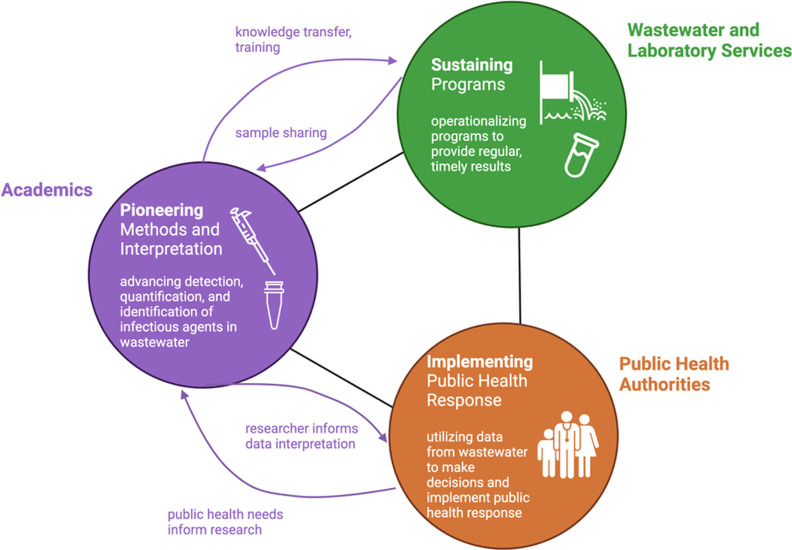Figure 1.
Framework for building robust and adaptive wastewater surveillance programs. In addition to undertaking basic research that underpins the basis of wastewater surveillance, researchers have a critical role to play in continuous methods development, technology transfer, research that informs data context and interpretation, and training the next generation of professionals.

